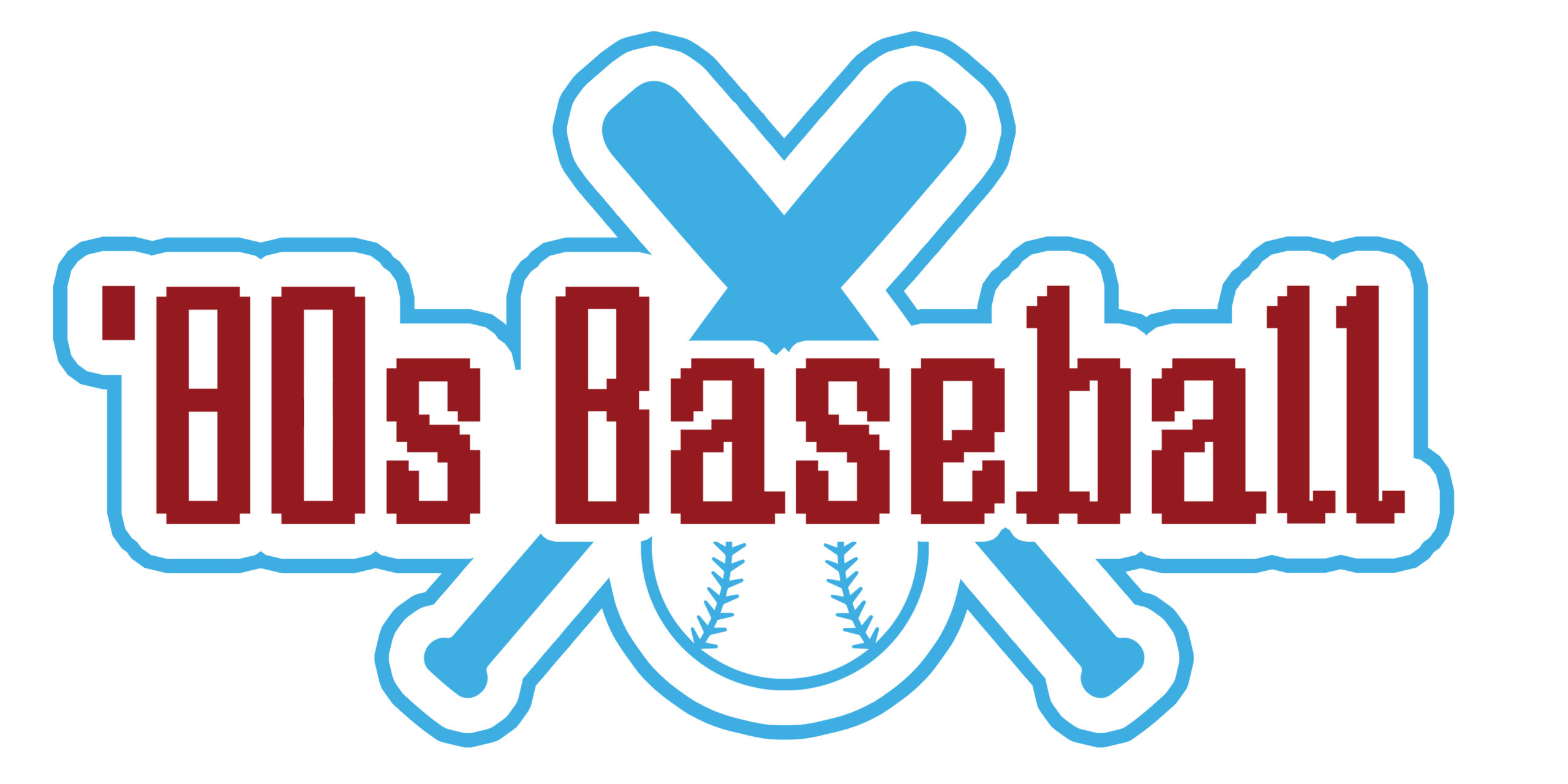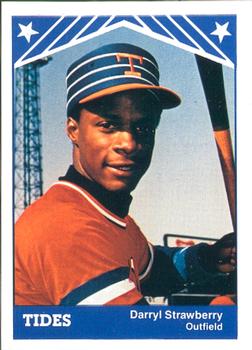Share This Page
Breaking It Down
The Major League Baseball draft is an inexact science at best.
At worst, it’s a crap shoot.
Entering 2023, just two players, Ken Griffey Jr. and Chipper Jones, have been selected No. 1 overall and eventually reached the Hall of Fame, which is just one more Hall of Famer than was produced by Round 62 (Mike Piazza).
Every year, teams head into the draft looking for a sure thing, like Griffey, while also hoping to find a player like Piazza. With that in mind, here is a team-by-team look at the first round of the draft from the 1980s with a few caveats:
- This is inherently an unfair process and is not intended as an indictment of any team or general manager. It’s easy to look back forty years later and see where teams went wrong.
- For the purposes of this piece, I used WAR as a measuring stick. Simply put, it made evaluation easier and more uniform. It’s not perfect.
- Teams only receive credit for players they draft and sign in the same year.
- Average pick number includes supplemental and free agent compensation picks, which explains why the Angels had 16 first-round picks in the decade.
- I have chosen a best and worst pick for each team, but the worst pick a team made doesn’t mean that was the worst player. My process is entirely subjective and considers when the pick was made and who was available at the time.
- Steroids were a thing. We don’t know for certain who did what, so my decisions are based on the numbers.
With that said, on to the picks!
California Angels
Avg Pick: 18
Total number of picks: 16
Total WAR of picks: 77.4
Avg. WAR of picks: 4.8
Best pick: Jim Abbott
Worst pick: Bob Kipper
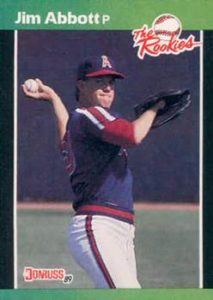 Explanation: Abbott was selected #8 overall in 1989 and posted the highest WAR (19.6) of any player the Angels selected in the first round during the decade.
Explanation: Abbott was selected #8 overall in 1989 and posted the highest WAR (19.6) of any player the Angels selected in the first round during the decade.
Kipper was the 8th overall selection in 1982 and posted a career WAR of -1.3. Keeping the comparisons strictly to pitchers, Toronto selected Duane Ward with the very next pick and the Cardinals took Todd Worrell at 21.
Overview: The Angels had an interesting decade. As mentioned above they had a remarkable 16 first round draft picks and, while four of them contributed a WAR of at least 11, only two of those players, Abbott and Dick Schofield, made the bulk of his contributions to the Angels. The other two, Dennis Rasmussen (1980), and Roberto Hernandez (1986) made names for themselves elsewhere. In fact, neither of them threw an inning for the Angels. Rasmussen went to the Yankees for Tommy John, and Hernandez was traded to the White Sox for Mark Davis.
It was hit-and-miss for the Angels. As mentioned, they selected four players with a career WAR of more than 11, but they also selected three players with negative WAR numbers. With 16 picks, I’m sure they would have liked to see better production.
Houston Astros
Avg Pick: 15
Total number of picks: 9
Total WAR of picks: 75.3
Avg. WAR of picks: 8.4
Best pick: Craig Biggio
Worst pick: Robbie Wine
 Explanation: Selecting Biggio as the best pick is a no-brainer. He was the 22nd overall pick in 1987 and made the Hall of Fame.
Explanation: Selecting Biggio as the best pick is a no-brainer. He was the 22nd overall pick in 1987 and made the Hall of Fame.
Wine was chosen #8 overall in 1983 and returned a career WAR of -0.6. The 1983 first round was not a strong one, however, with two exceptions: Roger Clemens went to Boston at pick 19 and Dan Plesac went to Milwaukee at pick 26.
Overview: The Astros scored big with Biggio but the rest of their decade was not good. They did not have a first or second round pick in 1980 or 1981 due to free agent compensation, BUT those two drafts produced one player who made it to the major leagues, Jeff Calhoun. An average WAR of 8.4 is not too bad for the decade but the numbers are heavily skewed by Biggio. If he was removed, the remaining eight players selected in the first round produced an average WAR of 1.0
Oakland A’s
Avg Pick: 11
Total number of picks: 8
Total WAR of picks: 81.3
Avg. WAR of picks: 10.0
Best pick: Mark McGwire
Worst pick: Mike King
 Explanation: McGwire (#10 overall in 1984) won Rookie of the Year in 1987 when he hit 49 homers to set a rookie record, but the A’s scored big with their 1985 pick of Walt Weiss, who also won Rookie of the Year.
Explanation: McGwire (#10 overall in 1984) won Rookie of the Year in 1987 when he hit 49 homers to set a rookie record, but the A’s scored big with their 1985 pick of Walt Weiss, who also won Rookie of the Year.
King is a perfect example of the chaos surrounding the A’s in the early part of the decade. He was the #4 overall pick in 1980, never reached the big leagues, and won just 21 games as a professional, including only two at Triple-A.
Overview: The beginning of the decade was a disaster, with Charlie Finley calling the shots in 1980 and Billy Martin in 1981 and ’82. Once Sandy Alderson took over as the general manager in 1983 things began to look up for the A’s and it paid off with three consecutive trips to the World Series at the end of the decade.
Toronto Blue Jays
Avg Pick: 14
Total number of picks: 9
Total WAR of picks: 4.5
Avg. WAR of picks: 0.5
Best pick: Ed Sprague
Worst pick: (tie) Garry Harris & Augie Schmidt
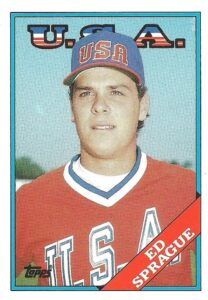 Explanation: Ed Sprague is Toronto’s top first-round pick because he produced a career WAR of 5.7 after being the 25th player selected in 1988 and the fact that Toronto had a horrible drafting decade.
Explanation: Ed Sprague is Toronto’s top first-round pick because he produced a career WAR of 5.7 after being the 25th player selected in 1988 and the fact that Toronto had a horrible drafting decade.
After the Mets made Darryl Strawberry the #1 pick in 1980, Toronto followed up with shortstop Garry Harris at #2. Harris never got higher than Double-A and made an amazing 54 errors in 66 games in the rookie-level Pioneer League. There were three other shortstops taken after Harris in the first round, Kelly Gruber, Darnell Coles, and Rich Renteria and they all reached the big leagues. Not a single player Toronto selected in 1980 made it to the big leagues.
Schmidt, another shortstop, went #2 overall in 1982 and did not reach the big leagues. The Mariners took Spike Owen at #6 overall. Dwight Gooden went 5th.
Overview: Looking back at the Blue Jays draft was very surprising, especially considering Pat Gillick was at the helm. Toronto had the #2 pick twice and both times they took a shortstop who didn’t reach the big leagues. Other than Sprague, Toronto had just one first-round selection post a positive WAR number over the course of their career and that was Matt Williams (pitcher) who finished his career with a WAR of 0.4.
As poorly as Gillick did in the first round, he was amazing in the later rounds, nabbing top talent like David Wells, Jimmy Key, Pat Borders, John Olerud, and Jeff Kent among others, nearly all of whom played major parts in the Blue Jays winning back-to-back World Series titles in 1992 and 1993.
Atlanta Braves
Avg Pick: 9
Total number of picks: 10
Total WAR of picks: 58.1
Avg. WAR of picks: 5.81
Best pick: Steve Avery
Worst pick: Tyler Houston
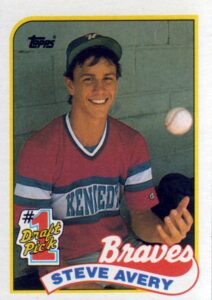 Explanation: Like Toronto, Atlanta’s top pick is somewhat by default since the rest of their top picks failed to make much of an impact with the team. The Braves took Steve Avery with the 3rd overall pick in 1988 and he looked to be on the path to becoming one of the game’s top pitchers, going 47-25 between 1991 and 1993. But his production slipped in 1984 and then injuries took their toll. He still posted a career WAR of 13.8.
Explanation: Like Toronto, Atlanta’s top pick is somewhat by default since the rest of their top picks failed to make much of an impact with the team. The Braves took Steve Avery with the 3rd overall pick in 1988 and he looked to be on the path to becoming one of the game’s top pitchers, going 47-25 between 1991 and 1993. But his production slipped in 1984 and then injuries took their toll. He still posted a career WAR of 13.8.
Houston was the #2 overall pick in 1989 and, though he did spend eight years in the big leagues, he was never a star, posting a career WAR of 1.4.
Overview: It seems fitting that the Braves faced off against the Blue Jays in the 1992 World Series because they had such similar draft histories in the 1980s. Like Toronto, Atlanta did not enjoy a lot of success in the first round, but enjoyed great success in later rounds, picking up Zane Smith, Ron Gant, Mark Lemke, Tom Glavine Mike Stanton, and Ryan Klesko.
There are a few other things to note about Atlanta’s drafts in the ‘80s. First, like Toronto, they had a draft that produced zero big league players (1981 for Atlanta, 1980 for Toronto).
Second, Atlanta had the 5th overall pick in 1986 and chose Kent Mercker, who had a fine career. They also selected in later rounds but did not sign, Steve Finley, Tim Salmon, and Ben McDonald. That could have been an amazing draft class. The Braves also drafted Randy Johnson in 1982 but he chose to go to U.S.C. Just imagine the Braves’ pitching staff with Avery, Johnson, Maddux, Glavine, and Smoltz.
Third, their 1984 draft class produced a total career WAR of 80.6, which is impressive until you factor in that Glavine was their second pick and his career WAR was 80.7. The rest of the class produced a total WAR of -0.1.
Last, the Braves selected Duane Ward #9 overall in 1982. He made his big-league debut for Atlanta in 1986 but was dealt to Toronto late in the year where he developed into a solid closer, saving 121 games between 1988 and 1993. The player Atlanta got in return for Ward on July 6th, 1986, was Doyle Alexander. A year later, they sent him to Detroit for John Smoltz.
Milwaukee Brewers
Avg Pick: 19
Total number of picks: 10
Total WAR of picks: 141.7
Avg. WAR of picks: 14.2
Best pick: Gary Sheffield
Worst pick: Isiah Clark
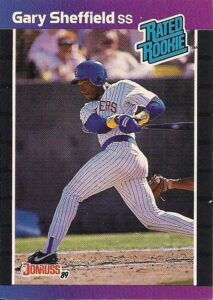 Explanation: Sheffield is the easy choice for best pick here. He was the #6 overall pick in 1986 and posted a career WAR of 60.5.
Explanation: Sheffield is the easy choice for best pick here. He was the #6 overall pick in 1986 and posted a career WAR of 60.5.
Clark was selected #18 overall in 1984 and did not reach the big leagues, but he is also the choice because Milwaukee drafted so well in the 1980s, especially in the first round. Five of their ten first round picks had a career WAR of more than 10 and they did not have a first-round pick in 1981.
Overview: The Brewers had a great decade in terms of the draft. Sheffield turned into a top talent, though many of his best years were with other teams, but the Brewers also picked B.J. Surhoff with the #1 pick in 1985 (34.4 WAR), Dan Plesac in 1983 (16.9), Cal Eldred in 1989 (15.8), Bill Spiers in 1987 (10.2, and Dion James in 1980 (6.2). They also selected Alex Fernandez with the 24th pick in 1988, but he chose to go to college instead. Perhaps the big question is how Milwaukee didn’t fare better on the field.
St. Louis Cardinals
Avg Pick: 18
Total number of picks: 12
Total WAR of picks: 73.9
Avg. WAR of picks: 6.2
Best pick: (tie) Todd Worrell & Brian Jordan
Worst pick: Mike Dunne
 Explanation: This is an interesting call for top pick. Jordan was selected 30th overall in 1988, a compensation pick for the loss of Jack Clark, and posted a career WAR of 32.9, the best WAR of any player selected by St. Louis. BUT… he put up his some of his numbers once he left St. Louis. Worrell was the #21 overall pick in 1982 and had a shorter career but he also won Rookie of the Year in 1986 and saved 121 games between 1986 and 1989 before having injury troubles.
Explanation: This is an interesting call for top pick. Jordan was selected 30th overall in 1988, a compensation pick for the loss of Jack Clark, and posted a career WAR of 32.9, the best WAR of any player selected by St. Louis. BUT… he put up his some of his numbers once he left St. Louis. Worrell was the #21 overall pick in 1982 and had a shorter career but he also won Rookie of the Year in 1986 and saved 121 games between 1986 and 1989 before having injury troubles.
Dunne was the #7 overall pick in 1984 but was traded to the Pirates before he made his big-league debut. His career WAR was just 0.1, but St. Louis sent him to the Pirates along with Mike Lavalliere and Andy Van Slyke in exchange for Tony Pena, so they still got production out of the pick.
Overview: Like some other teams, the Cardinals did not have a lot of luck in the first round, but enjoyed some success in later rounds, picking up Terry Pendleton, Vince Coleman, Tom Pagnozzi, Todd Zeile, and Ray Lankford among others.
Chicago Cubs
Avg Pick: 11
Total number of picks: 14
Total WAR of picks: 108.6
Avg. WAR of picks: 7.8
Best pick: Rafael Palmeiro
Worst pick: Drew Hall
 Explanation: The Cubs got it right when they picked Palmeiro #22 overall in 1985. He had an amazing career, though much of it came once he left Chicago.
Explanation: The Cubs got it right when they picked Palmeiro #22 overall in 1985. He had an amazing career, though much of it came once he left Chicago.
Hall (a pitcher) was the 3rd overall pick in 1984 and compiled a career WAR of -1.4. The pick is even more painful considering who went after him. Corey Snyder went one pick later, while the first round also included Jay Bell, McGwire, and Oddibe McDowell. The Cubs made up for the selected of Hall by picking Greg Maddux in the second round.
Overview: The draft was feast or famine for the Cubs in the 1980s. They hit big with Palmeiro, Joe Carter (#2 overall in 1981) and Shawon Dunston (#1 overall in 1982), but they missed with most of their other picks. Palmeiro, Carter, and Dunston comprise a staggering 95% of the total WAR produced by Chicago’s first round picks. Dallas Green took over as general manager prior to the 1982 season and grabbed Dunston and Maddux, as well as Mark Grace, Joe Giradri, Rick Wilkins, and Kevin Tapani. Jim Frey took over as GM for the final two drafts of the decade and it did not go well. His two drafts produced a total WAR of -4.7 and his two first-round picks, Ty Griffin and Earl Cunningham, did not reach the bigs. Griffin (9th overall in 1988) was a big name entering the draft but didn’t pan out and the White Sox selected Robin Ventura with the very next pick. Ouch.
Los Angeles Dodgers
Avg Pick: 17
Total number of picks: 12
Total WAR of picks: 14.8
Avg. WAR of picks: 1.2
Best pick: Tom Goodwin
Worst pick: Bill Bene
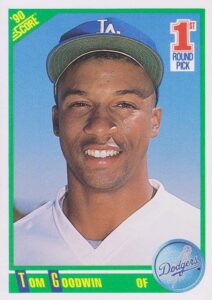 Explanation: This is another tough one as Goodwin produced the best career WAR of any Dodgers first-rounder, but he did most of his damage after the Dodgers released him in 1994.
Explanation: This is another tough one as Goodwin produced the best career WAR of any Dodgers first-rounder, but he did most of his damage after the Dodgers released him in 1994.
Bene, a pitcher, was the #5 overall selection in 1988 and won 15 games in the minor leagues against 30 losses. He won zero games at Triple-A and never reached the bigs.
Overview: The Dodgers had a tough draft decade but, in their defense, they were often picking late in the first round. Six of their 12 picks came at #18 or higher. Still, an average WAR of 1.2 for an entire decade of first-round picks is not what they would have hoped for.
Montreal Expos
Avg Pick: 17
Total number of picks: 12
Total WAR of picks: 37.1
Avg. WAR of picks: 3.1
Best pick: Delino DeShields
Worst pick: (tie) Pete Incaviglia & Charles Johnson
 Explanation: Deshields gets the nod as the best pick because his career WAR of 24.4 is nearly three-times higher than any of their other first-round picks, at least the ones that signed with them. But there are some interesting side notes. Terry Francona was Montreal’s #1 pick in 1980 and may have been a star, but he blew out his knee in 1982 and was never the same.
Explanation: Deshields gets the nod as the best pick because his career WAR of 24.4 is nearly three-times higher than any of their other first-round picks, at least the ones that signed with them. But there are some interesting side notes. Terry Francona was Montreal’s #1 pick in 1980 and may have been a star, but he blew out his knee in 1982 and was never the same.
The worst picks are Pete Incaviglia in 1985 and Charles Johnson in 1989. Not because they were bad players, but because neither of them signed with Montreal. Incaviglia technically signed but it was part of a deal in which they signed him and immediately traded him to Texas.
Overview: The Expos missed with their first-round pick in 1985, but hit big with their second rounder, a lefty named Randy Johnson. They also had success in the later rounds of 1988, selecting Chris Nabholtz, Marquis Grissom, and Bret Barbarie in rounds 2,3, and 7.
San Francisco Giants
Avg Pick: 13
Total number of picks: 11
Total WAR of picks: 145
Avg. WAR of picks: 13.2
Best pick: Will Clark
Worst pick: Alan Cockrell
 Explanation: Clark (1985) was a star from the day he made it to the big leagues, homering off Nolan Ryan in his first at-bat, and amassed a career WAR of 56.5 but the Giants hit big with the 1986 pick of Matt Williams as well, who put up a career WAR of 46.6. Royce Clayton in 1988 became a solid big leaguer as well, putting up a career WAR of 195.
Explanation: Clark (1985) was a star from the day he made it to the big leagues, homering off Nolan Ryan in his first at-bat, and amassed a career WAR of 56.5 but the Giants hit big with the 1986 pick of Matt Williams as well, who put up a career WAR of 46.6. Royce Clayton in 1988 became a solid big leaguer as well, putting up a career WAR of 195.
Cockrell was the overall #9 selection in 1984, one pick ahead of Mark McGwire, and spent more than 12 seasons in the minor leagues before making his debut with Colorado in 1996. BUT… the Giants had a supplemental pick that year and used it on Terry Mulholland so they still got production in the first round.
Overview: There are a few franchises where it becomes obvious that there was a change at the general manager slot and the Giants are among them. Spec Richardson was at the helm in 1980 and 1981 and things did not go well. Their entire 1980 draft netted a career WAR of -4.1. Tom Haller took over in 1982 and immediately turned things around. He missed on his first-round pick, but took Barry Bonds in the 2nd round and, while he didn’t sign, he turned out to be a great player. He then grabbed Jeff Robinson, Charlie Hayes, John Burkett, and Mike Aldrete after round-one in 1983 and also picked up Jeff Brantley, Trevor Wilson, and Dennis Cook in the later rounds in 1985.
Cleveland Indians
Avg Pick: 11
Total number of picks: 11
Total WAR of picks: 70.5
Avg. WAR of picks: 13.2
Best pick: Greg Swindell
Worst pick: Mark Lewis
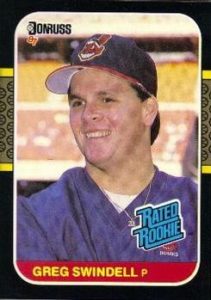 Explanation: Swindell was the #2 overall pick in the 1986 draft and made his big-league debut that season, going 5-2 in nine starts. Over the next five years he won 55 games for Cleveland, including a career-high 18 in 1988, and finished his career with a WAR of 30.5. Cleveland also did well with the #10 overall pick in 1980 when they selected Kelly Gruber, but they lost him to Toronto in the Rule 5 draft.
Explanation: Swindell was the #2 overall pick in the 1986 draft and made his big-league debut that season, going 5-2 in nine starts. Over the next five years he won 55 games for Cleveland, including a career-high 18 in 1988, and finished his career with a WAR of 30.5. Cleveland also did well with the #10 overall pick in 1980 when they selected Kelly Gruber, but they lost him to Toronto in the Rule 5 draft.
Just two years after picking Swindell, Cleveland had the #2 pick again and used it on Lewis, a high school shortstop from Hamilton, OH. The next two selections were Steve Avery (Atlanta) and Gregg Olson (Baltimore.) Lewis spent 11 years in the big leagues but was a regular for only three of them and amassed a career WAR of -2.6.
Overview: It was feast or famine for Cleveland drafts in the 1980s, sometimes even in the same year. Seven of their first-round picks posted career WAR numbers of less than one, ranging from Lewis’ -2.6 to Cory Snyder’s 0.7. On the other hand, Swindell and Gruber were very good players, as was Charles Nagy, who was selected with a supplemental pick in 1988, the same year they got Lewis. Another big hit was their 2nd-round selection of Albert (Joey) Belle in 1987. The did not have a first-round pick that year but when you get that kind of production out of your second rounder it’s a win. Grabbing future Hall of Famer Jim Thome in the 13th round in 1989 was a huge win.
Seattle Mariners
Avg Pick: 6
Total number of picks: 13
Total WAR of picks: 169
Avg. WAR of picks: 9.5
Best pick: Ken Griffey Jr.
Worst pick: Roger Salkeld
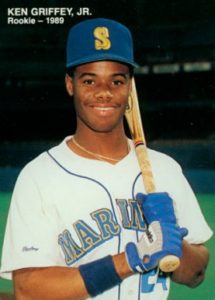 Explanation: Picking Junior is a no-brainer, both for the Mariners with the overall #1 pick in 1987, and for this list, but there are other solid candidates. Tino Martinez is also a consideration, not because he had a better career than Junior, but because he was the #14 overall pick and put up a career WAR of 29.
Explanation: Picking Junior is a no-brainer, both for the Mariners with the overall #1 pick in 1987, and for this list, but there are other solid candidates. Tino Martinez is also a consideration, not because he had a better career than Junior, but because he was the #14 overall pick and put up a career WAR of 29.
Selecting a “worst” pick for Seattle is difficult. They made 13 picks in the first round, including supplemental picks, and just one, Scott Burrell, did not reach the major leagues. Burrell was a supplemental pick in 1989, the same year they drafted Salkeld. There were a few other first-round picks that had negative career WAR numbers, but I chose Salkeld because he was the #3 overall selection in 1989 and won just 10 games at the major league level. In fairness to him and the M’s though, Salkeld won 23 games in his first three professional seasons and progressed from A-ball to the big leagues in less than three seasons. He missed all of 1992, his age-21 season, with arm trouble and was never the same.
Overview: Seattle’s drafts during the 1980s produced a lot of quality major league talent, but one would hope that would be the case considering they had four Top-3 picks and nine selections in the Top 10. They used the #1 pick in 1981 to pick Mike Moore and got Bill Swift at #2 in 1984. They also did well in later rounds, picking up Mark Langston, 1984 Rookie of the Year Alvin Davis, Phil Bradley, Erik Hanson, and Dave Burba after the first round.
New York Mets
Avg Pick: 16
Total number of picks: 14
Total WAR of picks: 112.6
Avg. WAR of picks: 8.0
Best pick: Dwight Gooden
Worst pick: Shawn Abner
 Explanation: Dwight Gooden should be in the Hall of Fame based on how he began his career. Unfortunately for him, his chance at Cooperstown went south based on how his career ended. He was the #5 overall pick in the 1982 draft and burst onto the scene in 1984 at age 19, winning 17 games, Rookie of the Year honors and striking out a league-leading 286 hitter. He followed that up by winning the Cy Young in his second season. Already a drinker, Gooden began experimenting with cocaine after 1985 and we all know the rest. That said, he was still dominant, averaging 18 wins over his first five seasons. After a down year in 1989, he bounced back and won 19 in 1990. Through his first eight seasons in the big leagues, Gooden posted a record of 132-53 with an E.R.A. of 2.91 and he was only 26.
Explanation: Dwight Gooden should be in the Hall of Fame based on how he began his career. Unfortunately for him, his chance at Cooperstown went south based on how his career ended. He was the #5 overall pick in the 1982 draft and burst onto the scene in 1984 at age 19, winning 17 games, Rookie of the Year honors and striking out a league-leading 286 hitter. He followed that up by winning the Cy Young in his second season. Already a drinker, Gooden began experimenting with cocaine after 1985 and we all know the rest. That said, he was still dominant, averaging 18 wins over his first five seasons. After a down year in 1989, he bounced back and won 19 in 1990. Through his first eight seasons in the big leagues, Gooden posted a record of 132-53 with an E.R.A. of 2.91 and he was only 26.
The Mets had the #1 pick in 1984 and used it to select Abner. He posted a career WAR of -1.3 and is a miserable human being.
Overview: The Mets 1980s draft history is one of success and what could have been, often personified by the same players. They had the first pick in the draft twice during the decade and used one of them to make one of their best picks of the 1980s. Unfortunately, the second time that had the overall #1 pick it was their worst pick of the decade. New Yok took Darryl Strawberry #1 overall in 1980 and were rewarded handsomely. Straw won Rookie of the Year in 1983 and posted an average season of .263/32/92 over his first eight years in the big leagues. Sure, he had substance problems, but I think most teams would take a ring and that kind of production out of a Number 1 pick. Another notable first-round selection was Gregg Jefferies in 1985 (20th overall), who posted a career WAR of 19.4.
Baltimore Orioles
Avg Pick: 18
Total number of picks: 10
Total WAR of picks: 50.7
Avg. WAR of picks: 4.2
Best pick: Greg Olson
Worst pick: Chris Myers
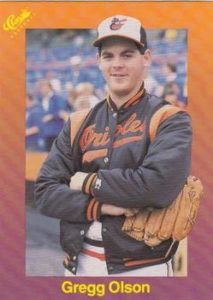 Explanation: In terms of career WAR numbers, Ben McDonad (20.8) is the selection for the best pick over Olson (12.8), but I went with Olson because he went a bit later in the draft (4th vs. 1st) and because McDonald came into the big leagues with so much hype. Baltimore took Olson in 1988 and he made his big-league debut less than three months later. He won Rookie of the Year in 1989 and saved 160 games over the next five years. McDonald was labeled by some as the best pitching prospect ever, but he had his career cut short by injuries. Like Olson, he made his big-league debut a few months after being drafted and seemed poised for stardom. He won a career-high 14 games in 1994 but developed tendonitis and won just 23 games over the next three seasons before his career was over thanks to a rotator cuff tear.
Explanation: In terms of career WAR numbers, Ben McDonad (20.8) is the selection for the best pick over Olson (12.8), but I went with Olson because he went a bit later in the draft (4th vs. 1st) and because McDonald came into the big leagues with so much hype. Baltimore took Olson in 1988 and he made his big-league debut less than three months later. He won Rookie of the Year in 1989 and saved 160 games over the next five years. McDonald was labeled by some as the best pitching prospect ever, but he had his career cut short by injuries. Like Olson, he made his big-league debut a few months after being drafted and seemed poised for stardom. He won a career-high 14 games in 1994 but developed tendonitis and won just 23 games over the next three seasons before his career was over thanks to a rotator cuff tear.
Myers, a pitcher, was the #7 overall pick in 1987 out of Plant HS in Tampa and never reached the big leagues. Kansas City took Kevin Appier two picks later.
Overview: The Orioles didn’t have much to show for their drafts in the 1980s, especially at the beginning of the decade, though it should be noted that they did not have first-round picks in 1981, 1985, or 1986 and they picked 24th or later in 1980, ’82, ’83, and ’84. Still, their first six first-round picks of the decade produced a combined career WAR of just 0.6. Pete Harnisch was a supplemental pick in 1987 and finished his career with a WAR of 17.9. Their best pick of the decade was taking Mike Mussina in the 11th round in 1987.
San Diego Padres
Avg Pick: 12
Total number of picks: 11
Total WAR of picks: 89.9
Avg. WAR of picks: 8.2
Best pick: Kevin McReynolds
Worst pick: (tie) Jeff Pyburn & Jimmy Jones
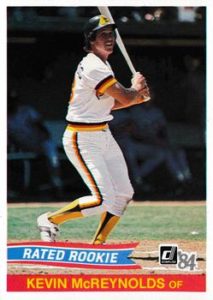 Explanation: McReynolds gets the nod here because his only competition in terms of career WAR is Andy Benes, but McReynolds was the 5th pick while Benes went #1 overall. Both had nice careers and Shane Mack at #11 in 1984 was another decent pick.
Explanation: McReynolds gets the nod here because his only competition in terms of career WAR is Andy Benes, but McReynolds was the 5th pick while Benes went #1 overall. Both had nice careers and Shane Mack at #11 in 1984 was another decent pick.
Pyburn was the #5 overall pick in 1980 out of the University of Georgia, signed for $103,500, the 3rd highest bonus of the draft, and didn’t reach the big leagues. He was out of baseball by the spring of 1983.
Jones was the 3rd overall pick in 1982 and, while he won 43 games over eight years in the bigs, you would like more out a pick at that point in the draft. On top of that, the Mets took Gooden two spots later lending to a big what if for both the Pads and Gooden.
Overview: San Diego’s first-round picks from the 1980s were pretty disappointing. Three of them didn’t reach the big leagues and three more posted career WAR numbers of 0.1 or worse. Their biggest score was selecting Tony Gwynn in the 3rd round in 1981.
Philadelphia Phillies
Avg Pick: 14
Total number of picks: 9
Total WAR of picks: 7.7
Avg. WAR of picks: 1.0
Best pick: Ricky Jordan
Worst pick: Jeff Jackson
 Explanation: Ricky Jordan was a solid major league player albeit with a brief career. He was Philadelphia’s #1 pick (22nd overall) in 1983 and reached the big leagues in 1988, batting .308 in 69 games.
Explanation: Ricky Jordan was a solid major league player albeit with a brief career. He was Philadelphia’s #1 pick (22nd overall) in 1983 and reached the big leagues in 1988, batting .308 in 69 games.
Jackson is a pick Phillies Phans would love to have back. He was taken #4 overall in 1989 and never reached the big leagues. The White Sox selected Frank Thomas three picks later.
Overview: The Phillies had a miserable decade in terms of the draft. Three of their first-round picks did not reach the major leagues and three others produced a WAR of below zero. Just Jordan and Pat Combs (1.9) had a positive career WAR.
Pittsburgh Pirates
Avg Pick: 11
Total number of picks: 10
Total WAR of picks: 182
Avg. WAR of picks: 18.2
Best pick: Barry Bonds
Worst pick: Mark Merchant
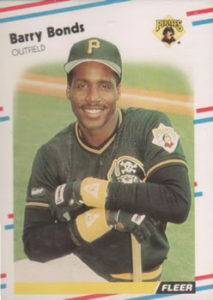 Explanation: Like Griffey in Seattle, Bonds is a no-brainer selection as Pittsburgh’s best draft pick for obvious reasons.
Explanation: Like Griffey in Seattle, Bonds is a no-brainer selection as Pittsburgh’s best draft pick for obvious reasons.
Merchant was the #2 overall pick in 1987, right after Griffey, and never reached the big leagues. He battled injuries and poor performance, spending 11 seasons in the minor leagues and one in Mexico.
Overview: The Pirates had a rough decade in the draft except for Bonds. They used the overall #1 pick on Jeff King in 1986, who was a good player, but six of their picks delivered a career WAR number of 1.0 or below while Sammy Khalifa’s career WAR was 0.9.
Texas Rangers
Avg Pick: 13
Total number of picks: 12
Total WAR of picks: 125.2
Avg. WAR of picks: 10.4
Best pick: Kevin Brown
Worst pick: Donald Harris
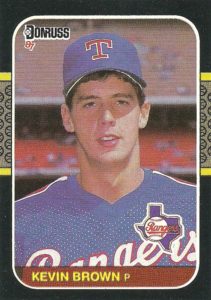 Explanation: Brown is an easy pick here. He was the 4th overall selection in 1986 and won 211 games, posting a career WAR of 67.8.
Explanation: Brown is an easy pick here. He was the 4th overall selection in 1986 and won 211 games, posting a career WAR of 67.8.
Harris was the 5th overall pick in 1989, one slot after the Phillies selected Jeff Jackson, and while he did reach the major leagues, he amassed a total of 24 hits over parts of three seasons for a total WAR of -1.3.
Overview: Texas had pretty good luck with first round pitchers in the ‘80s, selecting Brown, Bobby Witt, Brian Bohannon, and Ron Darling. But position players were another story. Only Oddibe McDowell (12th overall in 1984) became a regular for any extended period.
Boston Red Sox
Avg Pick: 21
Total number of picks: 15
Total WAR of picks: 170
Avg. WAR of picks: 15.5
Best pick: Roger Clemens
Worst pick: Tom Fischer
 Explanation: Boston took Clemens with the 19th pick in the 1983 draft, and he won seven Cy Young Awards, including three in a Red Sox uniform, as well as an MVP. Any team would take that production, regardless of the questions about his career.
Explanation: Boston took Clemens with the 19th pick in the 1983 draft, and he won seven Cy Young Awards, including three in a Red Sox uniform, as well as an MVP. Any team would take that production, regardless of the questions about his career.
Fischer went 13th overall in 1988 and posted a career record of 41-42 in the minor leagues, He never made it to the majors.
Overview: Boston’s cumulative WAR of 170 for their first-round picks looks impressive, but it’s very top-heavy, with Clemens and Mo Vaughn making up 166.3 (98%) of that. Steve Lyons (1.9), Sam Horn (2.3), John Marzano (0.3) and Kevin Morton (0.4) were the only other picks to post a positive career WAR. They had some very good late picks, including Mike Greenwell (3rd round), Brady Anderson (10th) John Valentin (5th), and Jeff Bagwell (4th).
Cincinnati Reds
Avg Pick: 16
Total number of picks: 10
Total WAR of picks: 81
Avg. WAR of picks: 8.1
Best pick: Barry Larkin
Worst pick: Pat Pacillo
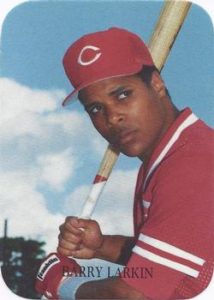 Explanation: Larkin was the 4th overall pick in 1985 out of Moeller HS in Cincinnati via the University of Michigan, won an MVP, helped the Reds win a World Series in 1990, and ended up in the Hall of Fame. The man is Cincinnati through and through.
Explanation: Larkin was the 4th overall pick in 1985 out of Moeller HS in Cincinnati via the University of Michigan, won an MVP, helped the Reds win a World Series in 1990, and ended up in the Hall of Fame. The man is Cincinnati through and through.
Pacillo was Cincinnati’s 1st pick (5th overall) in 1984 and won just four games over two seasons in the big leagues.
Overview: Like Boston, Cincinnati’s cumulative WAR for their first-round picks is top-heavy. The grand total is 81 and Larkin, Kurt Stillwell, and Ron Robinson combine for a WAR of 81.7 which means their remaining seven picks posted a cumulative WAR of -0.7. Going a bit deeper, the 1983 draft of Stillwell, Chris Sabo (2nd round), Joe Oliver (2nd round), and Jeff Montgomery (9th) yielded, directly or through trades, three starting position players and a front-line pitcher on their 1990 World Series team. Stillwell went to the Royals in exchange for Danny Jackson while the Reds sent Montgomery to Kansas City for Van Snider, then flipped him to the Yankees for Hal Morris.
Kansas City Royals
Avg Pick: 17
Total number of picks: 10
Total WAR of picks: 77.9
Avg. WAR of picks: 7.9
Best pick: Kevin Appier
Worst pick: John Morris
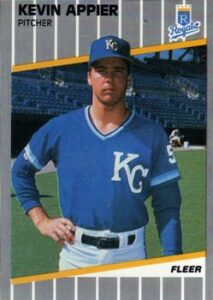 Explanation: The Royals took Appier with the 9th overall pick in 1987 and he was in the big leagues three years later. He finished 3rd in the 1990 A.L. Rookie of the Year balloting and 3rd in the Cy Young race in 1993. Over the course of his career, he won 169 games and posted a WAR of 54.5.
Explanation: The Royals took Appier with the 9th overall pick in 1987 and he was in the big leagues three years later. He finished 3rd in the 1990 A.L. Rookie of the Year balloting and 3rd in the Cy Young race in 1993. Over the course of his career, he won 169 games and posted a WAR of 54.5.
Morris went 10th overall in 1982 and was traded to the Cardinals in 1985 for Lonnie Smith. He spent parts of seven years in the bigs and posted a career WAR of -0.6.
Overview: The Royals picked inside the Top-10 just twice during the decade so they can be excused for not picking many impact players in the first round. Like other teams, they did very well in later rounds, picking Mark Gubicza and Bret Saberhagen, key contributors to their 1985 World Series championship team, after round one.
Detroit Tigers
Avg Pick: 21
Total number of picks: 11
Total WAR of picks: 48.6
Avg. WAR of picks: 4.4
Best pick: Travis Fryman
Worst pick: Wayne Dotson
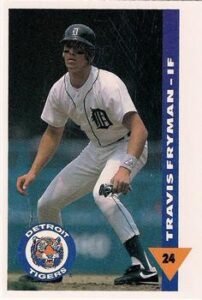 Explanation: Fryman is the obvious choice here as his career WAR of 34.4 is 21 points high than the next-closest candidate, Glenn Wilson.
Explanation: Fryman is the obvious choice here as his career WAR of 34.4 is 21 points high than the next-closest candidate, Glenn Wilson.
Dotson was Detroit’s first pick (15th overall) in 1983 and did not reach the big leagues.
Overview: Another extremely top-heavy draft as Fryman and Wilson combine to account for 98% of the total cumulative WAR of Detroit’s first-round picks for the decade. In the Tigers’ defense, Dotson was their highest overall pick at #15.
Minnesota Twins
Avg Pick: 11
Total number of picks: 10
Total WAR of picks: 85.7
Avg. WAR of picks: 8.6
Best pick: Chuck Knoblauch
Worst pick: Tim Belcher
 Explanation: The Twins salvaged their draft decade when they selected Knoblauch with the 25th overall choice in 1989. Prior to that, they had only drafted one impact player, Jay Bell, whom they traded to Cleveland for Bert Blyleven.
Explanation: The Twins salvaged their draft decade when they selected Knoblauch with the 25th overall choice in 1989. Prior to that, they had only drafted one impact player, Jay Bell, whom they traded to Cleveland for Bert Blyleven.
Belcher is the worst pick because Minnesota selected him #1 overall and then couldn’t sign him. That’s a huge miss.
Overview: Minnesota’s best draft of the decade was the January draft in 1982 when they nabbed Kirby Puckett. Aside from that there isn’t much to show. After picking Belcher #1 overall in 1983, the Twins picked Bill Swift and didn’t sign him either. Not a single one of their remaining 29 selections reached the big leagues. They also missed in 1987 when they picked Willie Banks at #3. He won a total of 33 games in the big leagues. The White Sox took Jack McDowell two picks later.
Chicago White Sox
Avg Pick: 14
Total number of picks: 12
Total WAR of picks: 178.4
Avg. WAR of picks: 15.9
Best pick: Frank Thomas
Worst pick: Kurt Brown
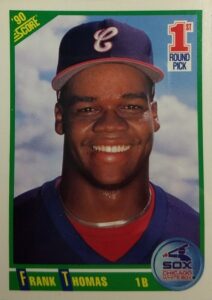 Explanation: The Teams that passed on Frank Thomas are likely still kicking themselves. If not, their fans certainly are. Thomas went 7th overall in 1989 and ended up in the Hall of Fame.
Explanation: The Teams that passed on Frank Thomas are likely still kicking themselves. If not, their fans certainly are. Thomas went 7th overall in 1989 and ended up in the Hall of Fame.
Chicago selected Kurt Brown, a HS catcher out of California with the 5th pick in 1985. The Pirates took Barry Bonds with the next pick. That’s gonna leave a mark.
Overview: Chicago is another franchise that saw a swift turnaround after a regime change. Their drafts for the first six years were below average, with Ron Karkovice and Darryl Boston being the only ones who turned into regulars. But beginning in 1987, general manager Larry Himes took Jack McDowell, Robin Ventura, and Thomas in his first three drafts. That’s solid work.
New York Yankees
Avg Pick: 22
Total number of picks: 1
Total WAR of picks: 0
Avg. WAR of picks: 0
Best pick: N/A
Worst pick: N/a
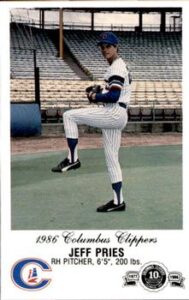 Overview: Thanks to their habit of signing free agents every winter, the Yankees only had one first-round draft pick in the 1980s. They used the 22nd overall pick in 1984 to select Jeff Pries and he did not reach the big leagues. Considering they made a total of zero postseason appearances between 1982 and 1996, perhaps that wasn’t a good decision.
Overview: Thanks to their habit of signing free agents every winter, the Yankees only had one first-round draft pick in the 1980s. They used the 22nd overall pick in 1984 to select Jeff Pries and he did not reach the big leagues. Considering they made a total of zero postseason appearances between 1982 and 1996, perhaps that wasn’t a good decision.
Powered by BlueHost
Monetize your website with Monumetric!
